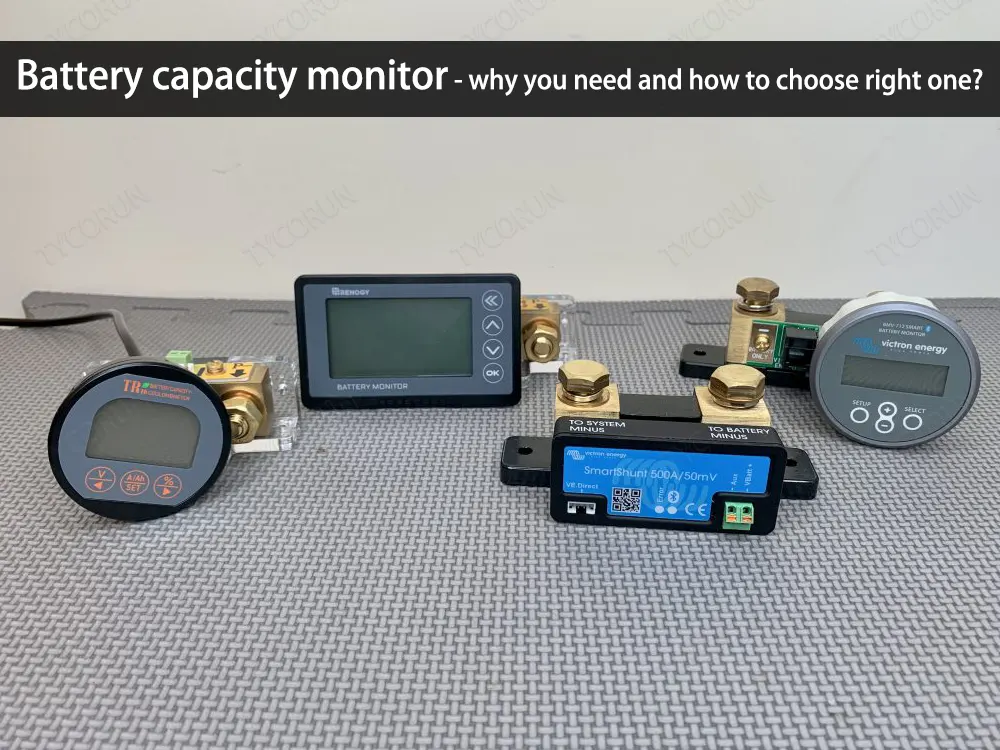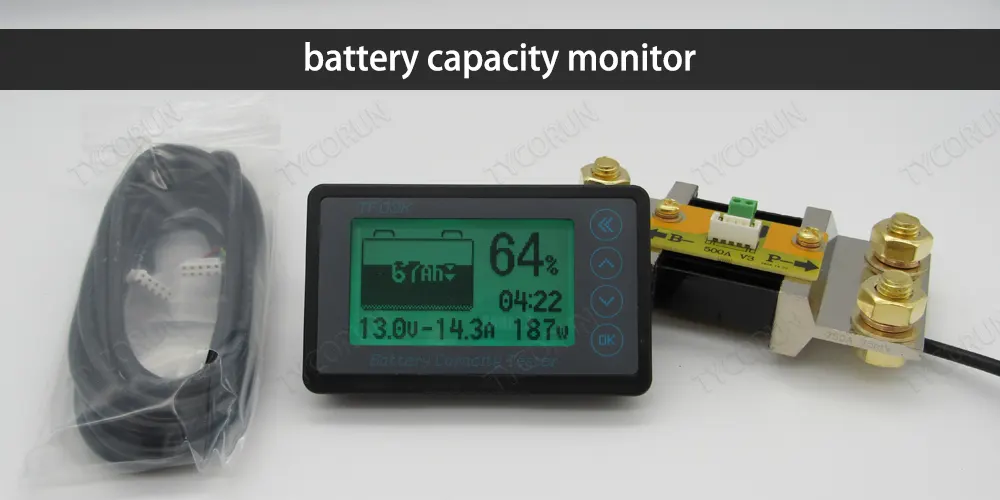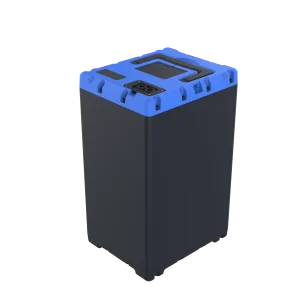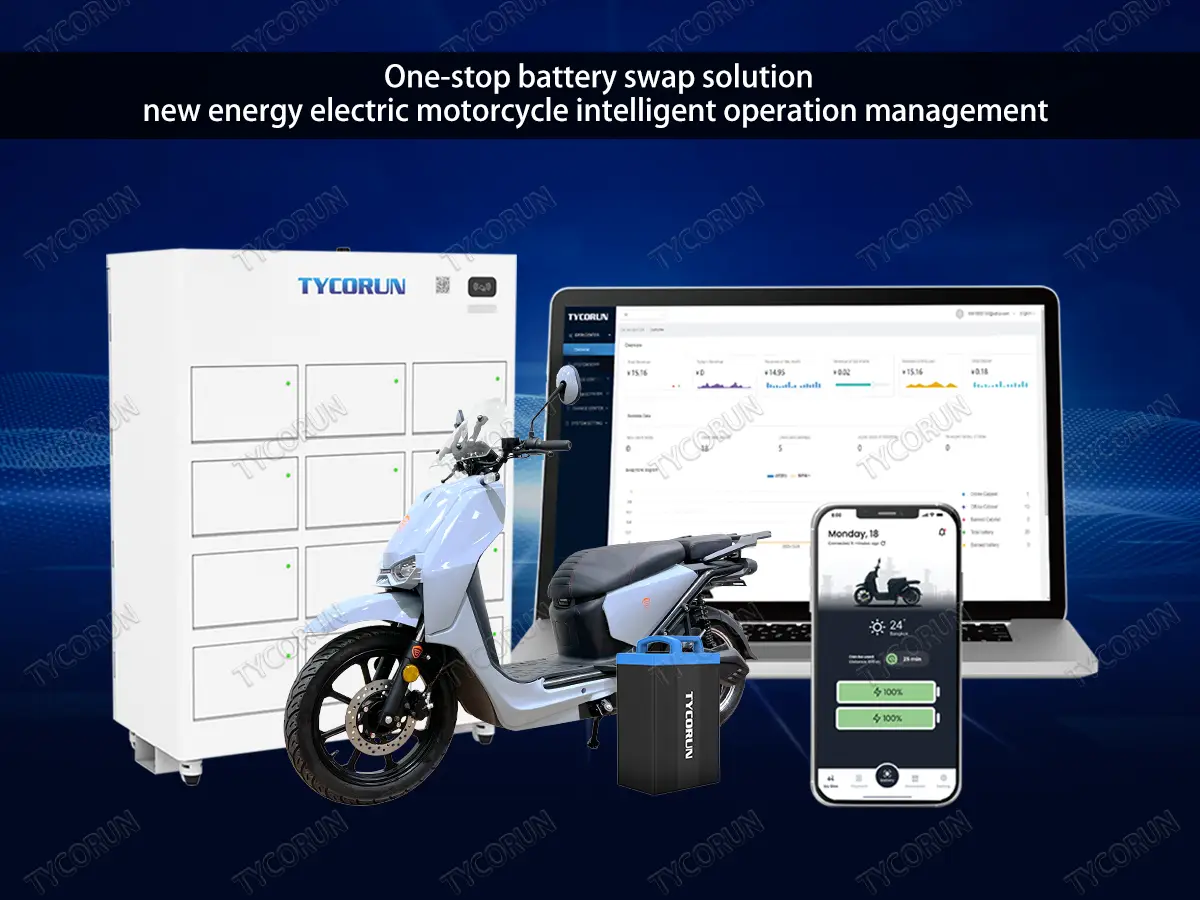Home » Lithium-ion battery safety » Battery capacity monitor – why you need and how to choose right one
Battery capacity monitor - why you need and how to choose right one?
Battery capacity monitor play a crucial role in ensuring batteries’ efficient and accurate performance. These monitors are designed to measure and monitor the capacity of batteries, providing valuable insights into their remaining charge and overall health.
In this article, we will explore how battery capacity monitor work and their benefits in terms of accuracy and reliability.
Users can optimize battery performance, extend their lifespan, and avoid unexpected power failures or downtime by utilizing these monitors. Thus, read till the end to learn more about this device and how to choose the right one for you.
What is battery capacity? why do we need monitor battery capacity?
The capacity of a battery is defined as the amount of energy it can store and provide to an electronic device or system. Its expression of ampere-hours (Ah) or watt-hours (Wh) indicates how much current or power a battery can provide over how long.
For instance, a 12v 100ah lithium ion battery can provide 2A for 100 hours or 1A for 200 hours before charging.

There are several reasons why keeping track of battery life is crucial. For a start, it can provide a rough idea of how long the battery will last, which helps you plan your activities and prevent unexpected shutdowns.
Also, it can help you maximize battery performance and life by avoiding overcharging and over-discharging that diminish battery capacity and shorten battery life.
Another reason you need to monitor battery’s capacity is that it can help you stay safer by revealing issues with the battery system that might lead to fires or explosions, such as loose connections, internal shorts, or excessive heat.
What is a battery capacity monitor?
A battery capacity monitor is a device or software designed to track and provide information about a battery’s charge and energy levels. It can also show other information, such as the battery voltage, current, power, temperature, and health.
As discussed in the previous section, a battery capacity monitor can help you optimize the performance and lifespan of battery.
There are a variety of battery capacity monitors on the market, each serving a specific function. Some are intrinsic to electronic devices that need batteries, such as computers, mobile phones, and cars.
Others are standalone devices that may be clipped into any battery or battery pack. Some are simple meters that show basic information, while others are more advanced and can communicate with a computer or a smartphone app.
A battery capacity meter is an invaluable device to maintain your battery’s health and prolong its life. You may reduce your energy use and lessen the likelihood of an untimely power outage.
How accurate are battery capacity monitors?
In computers, phones, vehicles, and other devices, knowing the remaining charge in its battery is essential and possible with a battery capacity monitor.
But they are not always a hundred percent accurate because the battery capacity depends on many factors, such as temperature, current, aging, and history of use.
The monitor has to estimate the capacity based on indirect measurements, such as voltage and current. There can be mistakes and noise in these readings, affecting the estimate’s accuracy.
Battery capacity monitors are essential parts of battery-powered systems because they make using energy more efficiently and safely possible. But getting accurate and reliable estimates of battery capacity is challenging and involves many trade-offs.
Different types of batteries and monitors have pros and cons that rely on cost, complexity, performance, climate, and the application’s needs.
How do battery capacity monitor work?
In reality, a battery’s charge capacity fluctuates depending on the circumstances. As a result, direct measurement is challenging.
Instead, battery capacity monitors use indirect methods to estimate it based on other parameters that can be measured more easily and accurately. Two main methods for estimating battery capacity are coulomb counting and voltage-based.
Coulomb counting involves measuring the current flowing in and out of the battery and integrating it over time to obtain the net charge transferred. Measuring the battery’s terminal voltage and comparing it to a known voltage-capacity curve constitutes a voltage-based estimate.
Some battery monitors combine both methods to achieve higher accuracy and reliability. For example, they may use coulomb counting to track the SOC during normal operation and voltage-based estimation to correct errors during idle periods or at specific SOC levels.
The use of temperature sensors and other ancillary metrics to enhance performance is possible.
What are the benefits of using battery capacity monitor?
● Reporting battery time to the user: Battery capacity monitors record and display data such as voltage, current, power usage, temperature, and anticipated remaining runtime in real-time so that the user may make informed decisions.
● Providing better power management: By altering the settings of device or application based on the battery state, battery capacity monitors help you minimize the power usage and extend the life of battery.
When the battery is low, you may save power in several ways. You can lower the screen’s brightness, turn off functions you don’t use often, or enter a low-power mode.
● Obtaining as long an uptime as possible: To ensure maximum uptime, battery capacity monitors protect your battery from being overcharged, discharged, connected to an incorrect voltage, experiencing a short circuit, being overheated, or experiencing any other fault conditions.
They can periodically calibrate the voltage-capacity curve to assure precise estimates and achieve cell-to-cell charge balance.
What types of battery capacity monitors are available?
Shunt-based monitor
Shunt-based monitors use a low-resistance resistor called a “shunt” that is connected in series with the battery.
This battery capacity monitor can determine how much current enters and leaves the battery by detecting the voltage drop across the shunt.
The monitor is able to assess the battery’s state of charge (SOC) by integrating the current over time. Coulomb counting is another name for this approach.
Voltage-based monitor
One of the most fundamental models of battery capacity monitors is the voltmeter. This instrument takes a simple voltage reading from the battery pack or individual cells to calculate an estimated SOC.
The state of charge (SOC) is the percentage of energy remaining in the battery compared to its full capacity. However, voltmeters aren’t particularly precise since battery voltage varies with variables like temperature, load, and age.
For example, a deep-cycle battery can lose a significant lifespan if you repeatedly discharge it too much. If a voltmeter incorrectly reads the battery’s state of charge, it might lead to early damage.
Ah-counter battery capacity monitor
The Ah-counter is a more sophisticated battery capacity monitor that measures the amount of current (in amperes) that flows in and out of the battery pack and uses that information to figure out how many ampere-hours (Ah) the battery has used up or been refilled with.
How much energy a battery can store or provide over time is measured in ampere-hours, or Ah. An Ah-counter is preferable to a voltmeter for approximating SOC since it compares the amount of energy used to the battery’s nominal capacity.
For example, the Peukert effect, in which a battery’s effective capacity decreases with increasing discharge rate, is not considered by Ah-counters.
Multi-function battery monitor
A more sophisticated type of battery capacity monitor is the multi-function battery monitor. Multiple battery pack metrics, including voltage, current, temperature, resistance, and efficiency, can be measured and analyzed with the help of this device’s integrated sensors and algorithms.
The Peukert effect, temperature, age, and self-discharge are just a few elements the multi-function battery monitor can account for to provide an accurate reading of the battery’s SOC and capacity.
A battery’s state of health (SOH) indicates its overall condition and performance relative to its original specifications, and the multi-function battery monitor may offer this information in addition to the time left till complete charge or discharge.
How do I choose the right battery capacity monitor for my needs?
There are many variables to consider while shopping for a battery capacity monitor that will meet your demands. However, with a little research and advice, you can choose the best device that fits your needs and budget. For guidance in making your choice, consider the following:
● Check the Battery Pack
You can start by figuring out the fundamentals of your battery pack, such as its voltage, current, capacity, and chemistry.
This will help you narrow down a battery capacity monitor that is both suitable and capable of measuring and displaying the required information. A 18650 battery tester, for example, is designed to evaluate the specific chemistry and voltage of 18650 battery.
● Determine the Aim of Using a Battery Capacity Monitor
Secondly, you need to figure out why you’re keeping tabs on your battery pack and what you want to achieve.
Do you only care about the battery’s capacity, or do you also want to track things like its SOH, efficiency, temperature, and resistance? Do you want to keep your battery pack from becoming too hot or too cold? Is it your goal to interact with third-party hardware or software?
The characteristics and capabilities of the battery capacity monitor you ultimately choose will be determined by the answers you provide. A battery management system (BMS) is one option for those seeking a convenient all-in-one tool to monitor, manage, and safeguard their battery pack.
● Cost and Convenience
Another thing you need to think about is how much it will cost and how practical it will be to use. How much are you willing to spend on a battery capacity monitor? How simple is it to set up and operate? What is the device’s accuracy and reliability like? When does the gadget need to be replaced or adjusted?
These are some of the inquiries that may aid in determining the device’s efficiency and convenience. A voltmeter, for instance, is a cheap and straightforward option for getting a rough idea of your battery’s SOC.
Can battery capacity monitors work with any type of battery?
In a real sense, not all battery capacity monitors are compatible with all battery types. There is a wide variety of battery kinds, each with its own voltage range, discharge curve, and chemical makeup.
Therefore, you should choose a battery capacity monitor that works with the type and model of your batteries.
Some watches, for instance, work well with lead-acid batteries, while others can accommodate lithium-ion cells. In addition, there are monitors available that can be set to work with various battery voltages, including 12V, 24V, 36V, and 48V, which can easily measure lithium batteries of corresponding voltages, such as 48v lithium ion battery, etc.
Before purchasing, check the product description and reviews to ensure you get the best battery capacity monitor. You must calibrate the device properly and install it according to the user manual’s directions if you want reliable results.
Conclusion
Battery capacity monitors are a must for maintaining peak performance and extending the life of your batteries. In addition to aiding in energy management, these sensors also improve overall system efficiency.
Choosing a battery capacity monitor compatible with your battery chemistry and size is important since different battery types have various applications. You can contact us to know which kind of battery capacitor monitor that’ll fit your need.
FAQs
Unfortunately, not all battery capacity monitors provide alarms and notifications. Some monitors display the remaining power on a screen or LED light, while others sound an alert when the power is dangerously low or has to be recharged. Alarms and alerts can assist in preventing battery damage from overcharging and over-discharging. They may be disturbing if they are overly loud or frequent. Thus, select a battery capacity monitor that suits your design and needs.
You can use certain capacity monitors for batteries with numerous batteries simultaneously. However, not all monitors are designed to work with every type of battery. Before you use the monitor with the batteries, you will need to examine the monitor's specs as well as the batteries' ability to work with the monitor.
A battery capacitor monitor does not call for a great deal of maintenance. Still, it needs some care and attention to ensure it continues to perform properly and accurately. Maintaining a clean monitor is essential, and making sure the wiring and connections are correct, in addition, to adjusting the settings on the display for proper calibration.




























